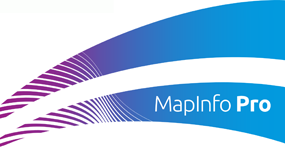MapInfo Standard - 64 Bit Training Course
 This two-day course designed for trainees who are totally new to MapInfo or who have only been shown the odd function by another user.
This two-day course designed for trainees who are totally new to MapInfo or who have only been shown the odd function by another user.
It is for V19, also known as 64-bit, versions of MapInfo Pro and all future versions. The course is run as a hands-on look at the basics of the software with training notes provided for revision and training purposes. Users will learn how to use MapInfo and complete tasks such as map or data outputs and the basic analysis of spatial information.
Then, as the user becomes more confident with the program, they will be able to use and create their own data in the software. Gradually, they will be able to complete more complicated tasks and analysis.
Places on the course cost £550 (excluding VAT) per person. Discounted rates are available for multiple trainees attending the course or trainees attending multiple courses.
Forthcoming Training Courses - MapInfo Standard - 64 Bit
- We are moving to new premises in Central Manchester - future dates to be announced shortly.
MapInfo Standard - 64 Bit Course Outline
1. Basics
- Theory
- Terminology
- Data
- Starting
2. Map and browser windows
- Menus, toolbars and defaults
- Opening layers
- Browser views
- Workspaces
- Navigating maps and data
- Co-ordinate systems
- Basic map tools e.g. Info, Labels, Hotlinks
3. Map layers
- Layer control
- Types of layer
- Layer properties, symbols and labels
- Zoom layering
- Grouping layers
4. Presentation of data
- Saving text data
- Maps as images
- Layered PDFs
- Layout window, frames and dynamic frames
- Scales and legends
- Templates
5. Mapping your data (1) – existing digital data
- Handling existing data
- Creating points from co-ordinate values
- Creating points from address data e.g. postcodes
6. Mapping your data (2) – creating new data layers
- New table structures, field types etc.
- Plotting data
- Editing objects
- Adding attribute data
- Batch updates
7. Spatial selection methods
- Selection tools
- Using queries
- Buffers
8. Basic SQL
- Browser filters and sorting
- An overview of the SQL dialogue box
- Querying for text, dates and numbers
- Wildcard searches
- Operators
- Database joins
9. Thematic maps
- What is a thematic map?
- Numerical and text-based maps
- Modifying thematic styles and legends
- Saving thematics and thematic templates

